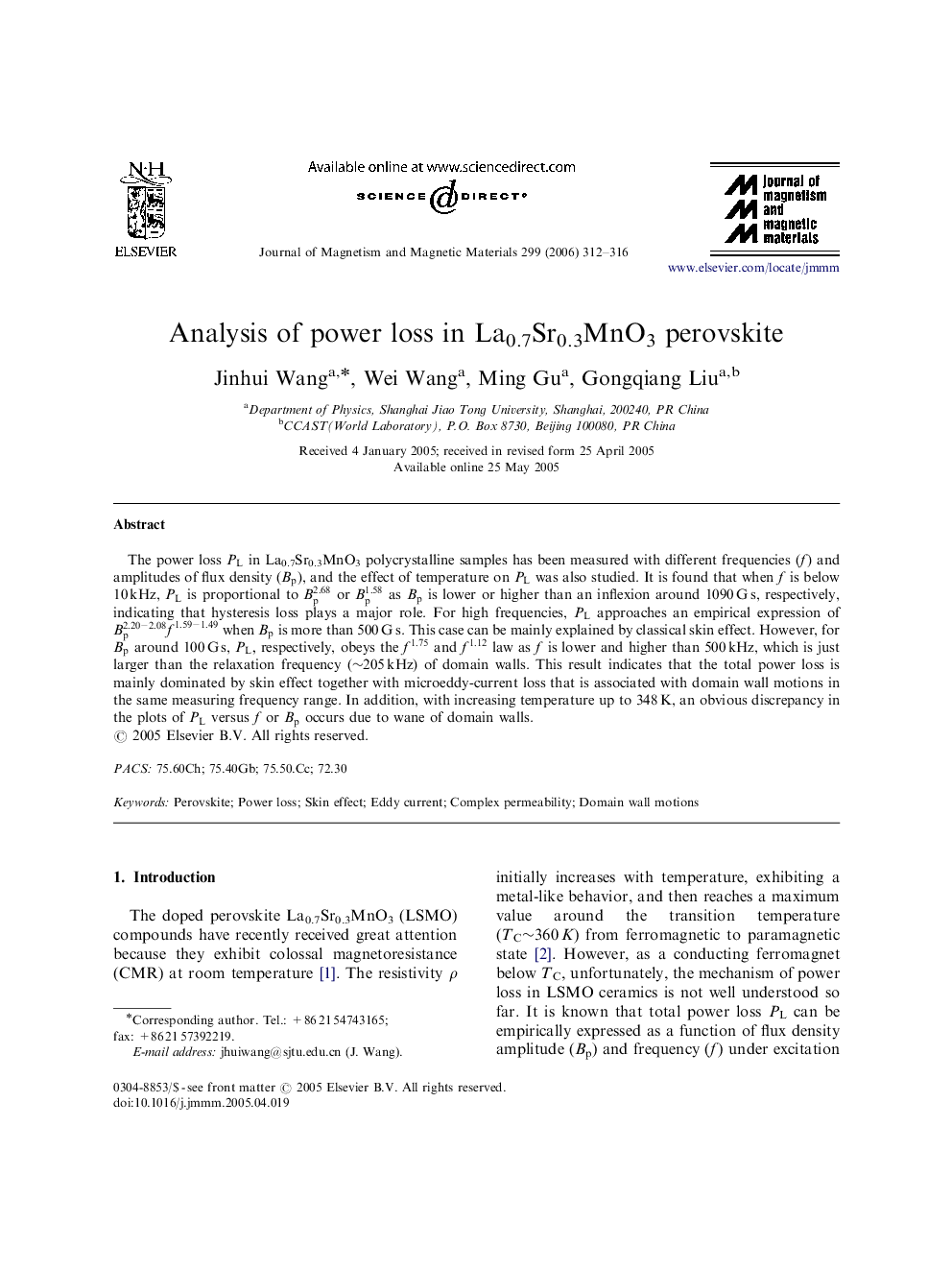| Article ID | Journal | Published Year | Pages | File Type |
|---|---|---|---|---|
| 1805389 | Journal of Magnetism and Magnetic Materials | 2006 | 5 Pages |
Abstract
The power loss PL in La0.7Sr0.3MnO3 polycrystalline samples has been measured with different frequencies (f) and amplitudes of flux density (Bp), and the effect of temperature on PL was also studied. It is found that when f is below 10Â kHz, PL is proportional to Bp2.68 or Bp1.58 as Bp is lower or higher than an inflexion around 1090Â GÂ s, respectively, indicating that hysteresis loss plays a major role. For high frequencies, PL approaches an empirical expression of Bp2.20-2.08f1.59-1.49 when Bp is more than 500Â GÂ s. This case can be mainly explained by classical skin effect. However, for Bp around 100Â GÂ s, PL, respectively, obeys the f1.75 and f1.12 law as f is lower and higher than 500Â kHz, which is just larger than the relaxation frequency (â¼205Â kHz) of domain walls. This result indicates that the total power loss is mainly dominated by skin effect together with microeddy-current loss that is associated with domain wall motions in the same measuring frequency range. In addition, with increasing temperature up to 348Â K, an obvious discrepancy in the plots of PL versus f or Bp occurs due to wane of domain walls.
Keywords
Related Topics
Physical Sciences and Engineering
Physics and Astronomy
Condensed Matter Physics
Authors
Jinhui Wang, Wei Wang, Ming Gu, Gongqiang Liu,
